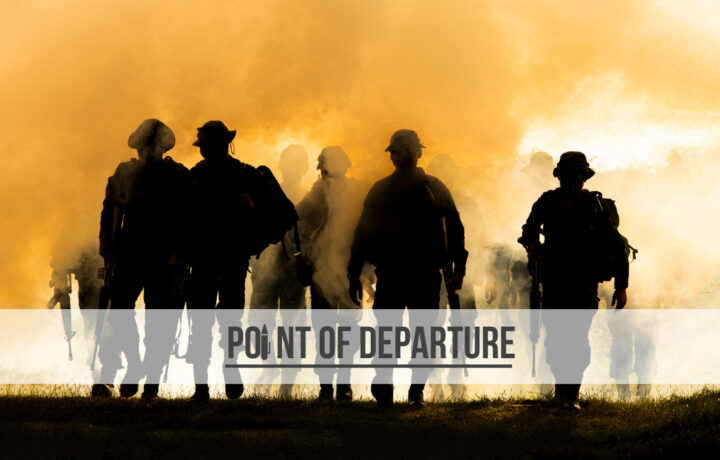It was a simple piece of advice, one offered to me as I transitioned from a college Reserve Officer Training Program environment to active duty. It’s also counsel that I’ve shared with more than my fair share of young leaders setting out into the wild for the first time. Show up fit and ready to hit the ground running. First impressions count, and you only get one chance to make a good first impression.
With hindsight and more than a little nostalgia, I can look back on my first day as a platoon leader and recall just how important that advice was for me. I was assigned to a platoon with a grizzled sergeant known for running platoon leaders into the ground, one of the reasons why he’s been without a lieutenant for the better part of a year.
Our first morning together began on the physical training field with stretches and warm-up exercises. We marched the platoon onto the two-lane road in front of the battalion headquarters and quickly moved to a double-time. Five miles later, with most of the platoon gasping for breath, my platoon sergeant pulled a Marlboro from a pack rolled into his shirt sleeve, lit it with a lighter kept in his sock, and took a long pull on the cigarette. He shook his head, blew a cloud of smoke into the morning air, and said, “L-T, I think we’re gonna get along just fine.”
FIT FOR DUTY
In the ranks of the military, physical fitness is a differentiator. A leader who maintains an appearance of fitness and health sets a positive example that others will emulate. But it’s also “a cornerstone of readiness,” an important tool to ensure that our people are fit to fight, in the best physical condition possible when we call on them to execute their duties at peak levels of performance for extended periods of time.
No service describes the necessity of physical fitness better than the Marine Corps. Rather than focus on systems, processes, or evaluations, Marine Corps Order 6100.13A conveys why being fit for duty matters, with the same brevity and directness the service uses for everything else:
Fitness is an essential component of Marine Corps combat readiness. Furthermore, physical fitness is an indispensable aspect of leadership. The habits of self-discipline and personal commitment that are required to gain and maintain a high level of physical fitness are inherent to the Marine Corps way of life and must be a part of the character of every Marine. Marines who are not physically fit detract from the combat readiness of their unit.
Military operations “place a premium on… strength, stamina, resiliency, and coordination.” Success isn’t a pick-up game. When duty calls, there’s an expectation that you’ll show up fit to fight, and able to perform for long periods of time without sleep or rest. That demands a level of holistic physical fitness that translates to sustained performance. You might not be asked to “march long distances in fighting load through rugged country,” but you will be expected to do your job without fail.
FIT FOR LIFE
However, there are benefits to physical fitness that extend beyond military service. Although no one expects me to run and crawl for long distances or to jump in and out of craters and trenches, being healthy and fit has a direct impact on my effectiveness in the workplace. On the other hand, “presenteeism” – showing up for work but functioning at a diminished capacity due to underlying health issues – has emerged as a significant burden to companies.
In 2020, K. Aleisha Fetters wrote in a U.S. News and World Report article, “When it comes to improving your work performance and career trajectory, maintaining a regular exercise habit is critical.” Maintaining holistic health and fitness has a measurable effect on performance, but it also impacts how the brain functions. Exercise spurs the brain’s speed and efficiency, creating new pathways to memories and other structures that didn’t exist previously.
Fetters goes on to describe five specific ways – all supported by research – that fitness improves your work performance and career trajectory:
1. Increasing workplace productivity.
Exercising for 30-60 minutes during the workday results in an average increase in productivity of 15%. That translates to being able to do more in less actual work time.
2. Making you a better coworker.
Exercise produces a measurable decrease in stress, making you easier and more pleasant to work with, which can help your career in untold ways.
3. Improving creativity.
I do some of my best creative thinking when my heart is pumping hard. In 2014, researchers at Stanford revealed that your creativity increases by an average of 60% when you’re exercising. Hit the track and fire up those creative juices.
4. Reducing cognitive decline.
A 2019 study showed that exercise “increases cortical thickness and executive function – memory, thinking, and cognitive control” – while helping to close the cognitive function gap as you age.
5. Improving mental health.
Exercise doesn’t just reduce stress, it “strengthens your capacity to deal with stress.” While much of this is likely due to changes in your brain resulting from exercise, the effect is still measurable and important. Exercise is often the difference between allowing stress to manage you and you to manage stress.
On most days, I take the opportunity to get in a full workout – including at least 30 minutes of cardiovascular exercise – before leaving for work. That ensures my energy level is up and my mind active before I step in front of a class of college seniors. Earlier in the year, one student – seeing the steaming mug in my hand as I circulated around the room – asked if maybe I was drinking too much coffee.
No. By 8:00 a.m., I am already fired up and fit to fight. Ready for the day ahead.




